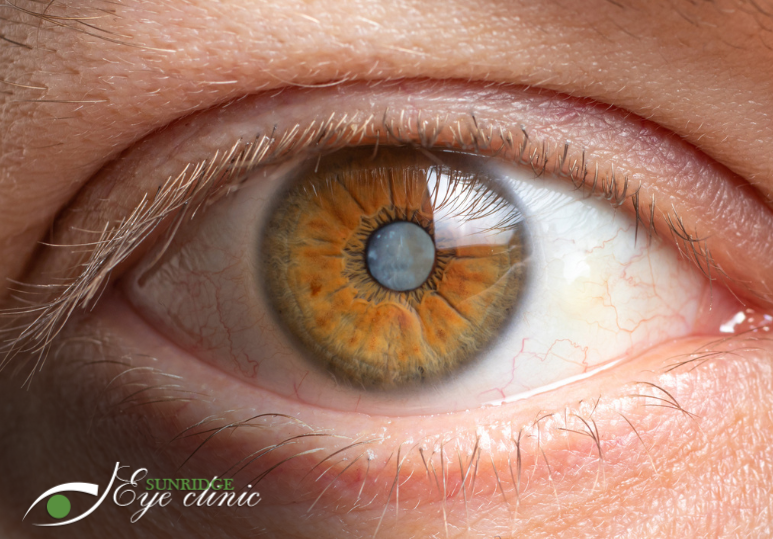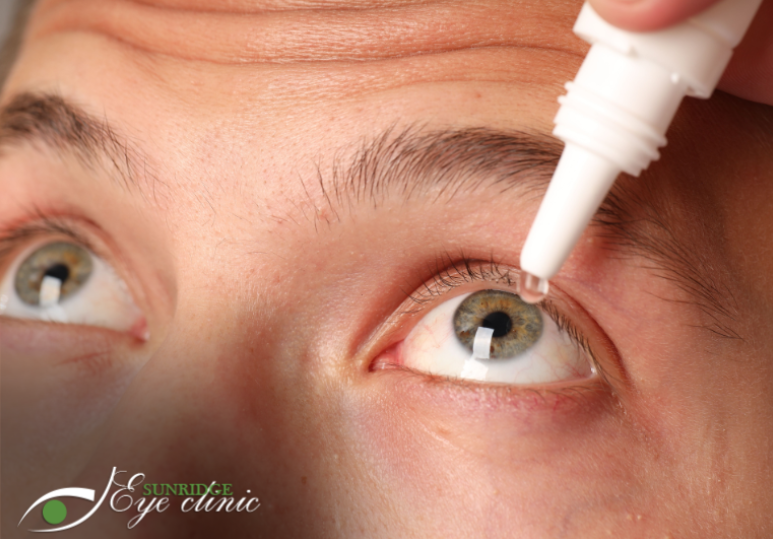Understanding Cataracts and Their Impact on Vision
A cataract occurs when the natural lens of the eye becomes cloudy, usually due to aging. Over time, this cloudiness scatters light entering the eye, leading to blurred vision and reduced clarity. While cataracts are a natural part of aging, lifestyle and health factors, such as diabetes, UV exposure, and smoking, can speed up their progression.
At Sunridge Eye Clinic, we help Calgary patients manage cataracts at every stage. Our optometrists monitor changes in your vision, adjust prescriptions as needed, and guide you when it’s time to consider surgery.
Common Symptoms of Cataracts
Cataracts typically develop slowly, and early symptoms can be subtle. Watch for:
- Cloudy or blurred vision
- Increased glare or halos around lights
- Faded colours or reduced contrast
- Difficulty driving at night
- Frequent prescription changes
If you experience these symptoms, an eye exam can confirm whether cataracts are the cause.
When Is It Time for Cataract Surgery?
Not all cataracts require immediate surgery. In early stages, stronger prescriptions or better lighting may help maintain clear vision. However, when cataracts begin to interfere with daily activities — such as reading, driving, or recognizing faces — it’s time to discuss surgery.
During your eye exam at Sunridge Eye Clinic, we’ll assess how cataracts are affecting your quality of life and determine whether a referral for surgery is appropriate. Our team collaborates with trusted ophthalmologists to ensure a smooth transition from diagnosis to treatment.
The Cataract Surgery Process
Cataract surgery is one of the safest and most common procedures worldwide. The cloudy lens is removed and replaced with a clear artificial intraocular lens (IOL). The procedure is quick, typically taking less than 30 minutes, and most patients notice improved vision within days.
At Sunridge Eye Clinic, we’ll help coordinate your referral, answer your questions, and provide follow-up care after surgery to ensure proper healing and lasting results.
Managing Cataracts Before and After Surgery
If surgery isn’t needed yet, your optometrist can help manage vision changes with updated glasses or anti-glare coatings. After surgery, follow-up visits ensure your eyes are healing well and your new lenses are providing optimal vision. Ongoing care helps protect against other age-related eye conditions, such as glaucoma or macular degeneration.
Book Your Cataract Assessment in Calgary
If you’re noticing cloudy or blurred vision, it may be time for a cataract assessment. At Sunridge Eye Clinic in Calgary, we’ll monitor your eye health, determine if surgery is needed, and help you maintain clear vision at every stage. Contact us today to schedule your cataract exam and take the next step toward sharper, brighter sight.
FAQs
Q: What causes cataracts?
A: Cataracts develop when proteins in the eye’s natural lens clump together, causing cloudiness. Aging is the most common cause, but UV exposure, diabetes, and smoking can accelerate development.
Q: What are the early signs of cataracts?
A: Common symptoms include cloudy or blurred vision, glare around lights, faded colours, and difficulty seeing clearly at night. If you are experiencing these symptoms, do not hesitate to contact Sunridge Eye Clinic today to book a comprehensive eye exam.
Q: Do cataracts always require surgery?
A: No. Early cataracts can often be managed with stronger prescriptions, better lighting, or anti-glare lenses until surgery becomes necessary.






